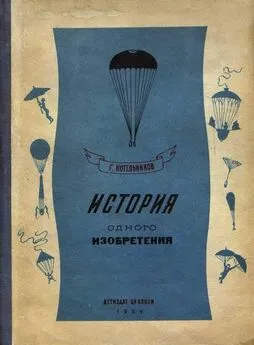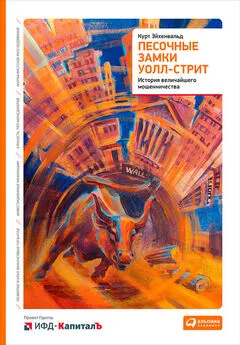Дэниел Эверетт - Как начинался язык. История величайшего изобретения
- Название:Как начинался язык. История величайшего изобретения
- Автор:
- Жанр:
- Издательство:Альпина Нон-Фикшн
- Год:2019
- Город:Москва
- ISBN:978-5-91671-950-5
- Рейтинг:
- Избранное:Добавить в избранное
-
Отзывы:
-
Ваша оценка:
Дэниел Эверетт - Как начинался язык. История величайшего изобретения краткое содержание
Хотя охотники за окаменелостями и лингвисты приблизили нас к пониманию, как появился язык, открытия Эверетта перевернули современный лингвистический мир, прогремев далеко за пределами академических кругов. Проводя полевые исследования в амазонских тропических лесах, он наткнулся на древний язык племени охотников-собирателей. Оспаривая традиционные теории происхождения языка, Эверетт пришел к выводу, что язык не был особенностью нашего вида. Для того чтобы в этом разобраться, необходим широкий междисциплинарный подход, учитывающий как культурный контекст, так и особенности нашей биологии. В этой книге рассказывается, что мы знаем, что надеемся узнать и чего так никогда и не узнаем о том, как люди пришли от простейшей коммуникации к языку.
Как начинался язык. История величайшего изобретения - читать онлайн бесплатно ознакомительный отрывок
Интервал:
Закладка:
Спасибо Кристен Нилл, моей неутомимой и внимательной помощнице, за получение разрешений на использование иллюстраций, а также за планирование моего графика.
Настоящая работа, как и многие другие, увидела свет благодаря поддержке и любви Линды Вульфман Эверетт.
Список рекомендуемой литературы
Anderson, Michael L. After Phrenology: Neural Reuse and the Interactive Brain. Cambridge, MA: MIT Press, 2014.
Arbib, Michael A. «From Monkey-Like Action Recognition to Human Language: An Evolutionary Framework for Neurolinguistics». Behavioral and Brain Sciences 28 (2), 2005:105–124.
— How the Brain Got Language: The Mirror System Hypothesis. Oxford University Press, 2012.
Barnard, Alan. Genesis of Symbolic Thought. Cambridge University Press, 2012.
Bednarik, R.G. «Concept-Mediated Marking in the Lower Palaeolithic». Current Anthropology 36, 1995: 605–634.
— «The „Australopithecine“ Cobble from Makapansgat, South Africa». South African Archaeological Bulletin, 53, 1998: 4–8.
— «Maritime Navigation in the Lower and Middle Palaeolithic». Comptes Rendus de l’Académie des Sciences Paris, Earth and Planetary Sciences , 328, 1999: 559–563.
— «Seafaring in the Pleistocene». Cambridge Archaeological Journal , 13(1), 2003: 41–66.
— «A Figurine from the African Acheulian». Current Anthropology , 44(3), 2003: 405–413.
— «Middle Pleistocene Beads and Symbolism». Anthropos , 100(2), 2005: 537–552.
— «Beads and the Origins of Symbolism». Time and Mind: The Journal of Archaeology, Consciousness and Culture 1(3), 2008: 285–318.
— «On the Neuroscience of Rock Art Interpretation». Time and Mind: The Journal of Archaeology, Consciousness and Culture 6(1), 2013: 37–40.
— «Exograms». Rock Art Research , 31(1), 2014: 47–62.
— «Doing with Less: Hominin Brain Atrophy». Homo — Journal of Comparative Human Biology , 65, 2014: 433–449; doi:10.1016/j.jchb.2014.06.001
— «Mind and Creativity of Hominins». SemiotiX: A Global Information Magazine , February 2017.
Bedny, Marina, Hillary Richardson and Rebecca Saxe. «„Visual“ Cortex Responds to Spoken Language in Blind Children». Journal of Neuroscience 35(33), 2015: 11674 -11681.
Berent, Iris. The Phonological Mind. Cambridge University Press, 2013.
Berwick, Robert C. and Noam Chomsky. Why Only Us? Cambridge, MA: MIT Press, 2016.
Bolhuis, Johan J., Martin Everaert, Robert Berwick and Noam Chomsky. Birdsong, Speech and Language: Exploring the Evolution of Mind and Brain. Cambridge, MA: MIT Press, 2016.
Boyd, Robert and Peter J. Richerson. Culture and the Evolutionary Process. University of Chicago Press, 1988.
— The Origin and Evolution of Cultures. Oxford University Press, 2005.
Brandom, Robert B. Making it Explicit: Reasoning, Representing, and Discursive Commitment. Cambridge, MA: Harvard University Press, 1998.
Bybee, Joan L. Language, Usage and Cognition. Cambridge University Press, 2010.
Cangelosi, Angelo. «Evolution of Communication and Language Using Signals, Symbols and Words». IEEE Transactions on Evolutionary Computation 5(2), 2001: 93-101.
Chomsky, Noam. «Formal Properties of Grammars». In R. Duncan Luce, Robert R. Bush and Eugene Galanter (eds), Handbook of Mathematical Psychology , vol. 2. New York: John Wiley, 1963, pp. 323–418.
— Language and Mind , enlarged edn. New York: Harcourt Brace Jovanovich, 1972.
— «On Language and Culture». In Wiktor Osiatynski (ed.), Contrasts: Soviet and American Thinkers Discuss the Future. New York: Macmillan, 1984, pp. 95-101.
— Knowledge of Language: Its Nature, Origin and Use. New York: Praeger, 1986.
— The Minimalist Program. Cambridge, MA: MIT Press, 1995.
— «Minimal Recursion: Exploring the Prospects». In Tom Roeper and Margaret Speas (eds), Recursion: Complexity in Cognition. Cham: Springer International, 2014, pp. 1-15.
Corballis, Michael C. From Hand to Mouth. Princeton University Press, 2002.
— «Recursion, Language and Starlings». Cognitive Science 31(4), 2007: 697–704.
De Ruiter, Jan P and David Wilkins. «The Synchronisation of Gesture and Speech in Dutch and Arrernte (an Australian Aboriginal Language)». In S. Santi, I. Guaïtella, C. Cavé and G. Konopczynski (eds), Oralité et Gestualité. Paris: L’Hamattan, 1998, pp. 603–607.
Dediu, Dan and Steven C. Levinson. «On the Antiquity of Language: The Reinterpretation of Neanderthal Linguistic Capacities and Its Consequences». Frontiers in Psychology , 5 July 2013. doi:10.3389/ fpsyg.2013.00397.
Diller, Karl C. and Rebecca L. Cann. «Evidence Against a Genetic-Based Revolution in Language 50,000 Years Ago». In R. Botha and C. Knight (eds), The Cradle of Language. New York: Oxford University Press, 2009, pp. 135–149.
Dunbar, Robin. Grooming, Gossip and the Evolution of Language. Cambridge, MA: Harvard University Press, 1998.
Efron, David. Gesture and Environment. New York: King’s Crown Press, 1941.
Evans, Vyvyan. «Beyond Words: How Language-Like is Emoji?» Oxford Dictionaries blog, 20 November 2015. http://blog.oxforddictionaries.com/2015/11/emoji-language/ .
Everaert, Martin B., Marinus A. Huybregts, Noam Chomsky, Robert C. Berwick and Johan J. Bolhuis. «Structures, Not Strings: Linguistics as Part of the Cognitive Sciences». Trends in Cognitive Sciences 19(12), 2015: 729–743.
Everett, Caleb D. «Evidence for Direct Geographic Influences on Linguistic Sounds: The Case of Ejectives». PLoS ONE 8(6), 2014: e65275. doi:10.1371/journal.pone.0065275.
— «Climate, Vocal Folds and Tonal Languages» (with D. Blasi and S. Roberts). Proceedings of the National Academy of Sciences of the United States of America 112(5), 2015: 1322–1327.
Everett, Daniel L. «Aspectos da Fonologia do Piraha». Master’s thesis, Universidade Estadual de Campinas, 1979. http://ling.auf.net/lingbuzz/001715 .
— «Phonetic Rarities in Piraha». Journal of the International Phonetics Association 12, 1982: 94–96.
— «A Lingua Piraha e a Teoria da Sintaxe». PhD dissertation, Universidade Estadual de Campinas, 1983. Published as A Lingua Piraha e a Teoria da Sintaxe , Campinas: Editora da UNICAMP, 1992.
— «Syllable Weight, Sloppy Phonemes and Channels in Piraha Discourse». In Mary Niepokuj et al. (eds.), Proceedings of the Eleventh Annual Meeting Berkeley Linguistics Society. Berkeley Linguistics Society, 1985, pp. 408–416.
— «Piraha». In Desmond Derbyshire and Geoffrey Pullum (eds), Handbook of Amazonian Languages I. Berlin: de Gruyter, 1986, pp. 200–326.
— «On Metrical Constituent Structure in Piraha Phonology». Natural Language and Linguistic Theory 6, 1988: 207–246.
— «The Sentential Divide in Language and Cognition: Pragmatics of Word Order Flexibility and Related Issues». Journal of Pragmatics and Cognition 2(1), 1994:131–166.
— «Monolingual Field Research». In Paul Newman and Martha Ratliff (eds), Field linguistics. Cambridge University Press, 2001, pp. 166–188.
— «Coherent Fieldwork». In P van Sterkenburg (ed.), Linguistics Today , Amsterdam: John Benjamins, 2004, pp. 141–162.
— «Periphrastic Pronouns in Wari». International Journal of American Linguistics 71(3), 2005: 303–326.
— «Cultural Constraints on Grammar and Cognition in Piraha: Another Look at the Design Features of Human Language». Current Anthropology 76, 2005: 621–646.
— Don’t Sleep, There Are Snakes: Life and Language in the Amazonian Jungle. New York: Pantheon, 2008.
— «„Wari“ Intentional State Construction Predicates». In Robert Van Valin (ed.), Investigations of the Syntax-Semantics-Pragmatics Interface. Amsterdam: John Benjamins, 2009, pp. 381–409.
— «Piraha Culture and Grammar: A Response to Some Criticisms». Language 85(2), 2009: 405–442.
— «You Drink. You Drive. You Go to Jail. Where’s Recursion?» Paper presented at the 2009 University of Massachusetts Conference on Recursion. http://ling.auf.net/lingbuzz/001141 .
— «The Shrinking Chomskyan Corner in Linguistics». Response to the criticisms Nevins, Pesetsky and Rodrigues raise against various papers of Everett on Piraha’s unusual features, published in Language 85, http://ling.auf.net/lingbuzz/000994/current.pdf , 2010.
— Language: The Cultural Tool. New York: Pantheon Books, 2012.
— «What Does Piraha Have to Teach about Human Language and the Mind?» WIREs Cognitive Science. doi:10.1002/wcs.1195, 2012.
— «A Reconsideration of the Reification of Linguistics». Paper presented at The Cognitive Revolution, 60 Years at the British Academy, London, 2013.
— «The State of Whose Art?» Reply to Nick Enfield’s review of Language: The Cultural Tool in Journal of the Royal Anthropological Institute 19(1), 2013.
— «Concentric Circles of Attachment in Piraha: A Brief Survey». In Heidi Keller and Hiltrud Otto (eds), Different Faces of Attachment: Cultural Variations of a Universal Human Need. Cambridge University Press, 2014, pp. 169–186.
— «The Role of Culture in the Emergence of Language». In Brian MacWhinney and William O’Grady (eds), The Handbook of Language Emergence. Hoboken, NJ: Wiley-Blackwell, 2014, pp. 354–376.
— Dark Matter of the Mind: The Culturally Articulated Unconscious. University of Chicago Press, 2016.
Everett, Daniel L. and Keren Everett. «On the Relevance of Syllable Onsets to Stress Placement». Linguistic Inquiry 15, 1984: 705–711.
Fitch, W. Tecumseh. The Evolution of Language. Cambridge University Press, 2010.
Floyd, Simeon. «Modally Hybrid Grammar? Celestial Pointing for Time-of-Day Reference in Nheengatu». Language 92(1), 2016: 31–64. doi:10.1353/lan.2016.001.
Freyd, Jennifer. «Shareability: The Social Psychology of Epistemology». Cognitive Science 7, 1983: 191–210.
Fuentes, Augustin. «The Extended Evolutionary Synthesis, Ethnography and the Human Niche: Toward an Integrated Anthropology». Current Anthropology 57, supp. 13, June 2016.
Futrell, Richard, Laura Stearns, Steven T. Piantadosi, Daniel L. Everett and Edward Gibson. «A Corpus Investigation of Syntactic Embedding in Piraha». PLoS ONE , 11(3), 2016: 60145289. doi:10.1371/ journal.pone.0145289.
Gil, David. «The Structure of Riau Indonesian». Nordic Journal of Linguistics 17, 1994: 179–200.
Goldberg, Adele. Constructions: A Construction Approach to Argument Structure. University of Chicago Press, 1995.
— Constructions at Work: The Nature of Generalisation in Language. Oxford University Press, 2006.
Grice, Paul. Studies in the Way of Words. Cambridge, MA: Harvard University Press, 1991.
Harris, Marvin. Cultural Anthropology. Boston: Allyn & Bacon, 1999.
Читать дальшеИнтервал:
Закладка:










